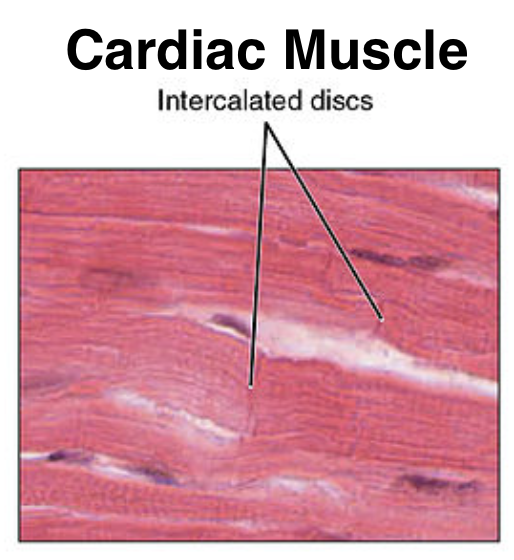
Characteristics of cardiac muscles are that they
(a) Contract quickly and get fatigued
(b) Contract quickly and do not get fatigued
(c) Contract slowly and get fatigued
(d) Contract slowly and do not get fatigued
Answer
561.3k+ views
Hint: For both skeletal and smooth muscle, the cardiac muscle shares essential characteristics. Functionally, like skeletal muscle, cardiac muscle produces heavy contractions. However, it has intrinsic mechanisms, such as smooth muscle, to cause continuous contraction.
Complete step by step answer:
The cardiac muscle is characterized by striped muscle fibers, linked by intercalated discs, where the membranes are specialized to allow easy passage of electrical signals. Cardiac muscles can stay in contraction for a prolonged time, like smooth muscles. Cardiac muscles can contract easily, much like skeletal muscles. In cardiac muscle cells, the formation of contractile proteins often allows stronger contractions when the fibers are stretched, which makes the heart pump more efficiently.

Additional information:
- The muscles in the heart contract rapidly and do not get tired.
- The muscle of the heart is often referred to as the myocardium or heart muscle.
- A striated, involuntary muscle is a cardiac muscle.
- The dominant tissue of the heart's wall is cardiac muscle.
- The cardiac muscle consists of cardiac muscle cells known as cardiomyocytes.
- In a similar way, the cardiac muscle contracts as the skeletal muscle contracts.
- The disorder caused by cardiac muscle is cardiomyopathy.
So, the correct answer is ‘contract quickly and do not get fatigued’.
Note: Cardiac muscle cells are only located in the heart and are specialized in powerfully and efficiently pumping blood during our lifespan. Cardiac muscle tissue cells are characterized by four features: they are involuntary and intrinsically regulated, striated, branched, and single nucleated.
Complete step by step answer:
The cardiac muscle is characterized by striped muscle fibers, linked by intercalated discs, where the membranes are specialized to allow easy passage of electrical signals. Cardiac muscles can stay in contraction for a prolonged time, like smooth muscles. Cardiac muscles can contract easily, much like skeletal muscles. In cardiac muscle cells, the formation of contractile proteins often allows stronger contractions when the fibers are stretched, which makes the heart pump more efficiently.

Additional information:
- The muscles in the heart contract rapidly and do not get tired.
- The muscle of the heart is often referred to as the myocardium or heart muscle.
- A striated, involuntary muscle is a cardiac muscle.
- The dominant tissue of the heart's wall is cardiac muscle.
- The cardiac muscle consists of cardiac muscle cells known as cardiomyocytes.
- In a similar way, the cardiac muscle contracts as the skeletal muscle contracts.
- The disorder caused by cardiac muscle is cardiomyopathy.
So, the correct answer is ‘contract quickly and do not get fatigued’.
Note: Cardiac muscle cells are only located in the heart and are specialized in powerfully and efficiently pumping blood during our lifespan. Cardiac muscle tissue cells are characterized by four features: they are involuntary and intrinsically regulated, striated, branched, and single nucleated.
Recently Updated Pages
Master Class 12 Business Studies: Engaging Questions & Answers for Success

Master Class 12 Economics: Engaging Questions & Answers for Success

Master Class 12 English: Engaging Questions & Answers for Success

Master Class 12 Maths: Engaging Questions & Answers for Success

Master Class 12 Social Science: Engaging Questions & Answers for Success

Master Class 12 Chemistry: Engaging Questions & Answers for Success

Trending doubts
Which animal has three hearts class 11 biology CBSE

1 Quintal is equal to a 110 kg b 10 kg c 100kg d 1000 class 11 physics CBSE

Explain zero factorial class 11 maths CBSE

The camels hump is made of which tissues a Skeletal class 11 biology CBSE

How do I convert ms to kmh Give an example class 11 physics CBSE

The percentage of free SO3 in oleum sample which is class 11 chemistry CBSE




